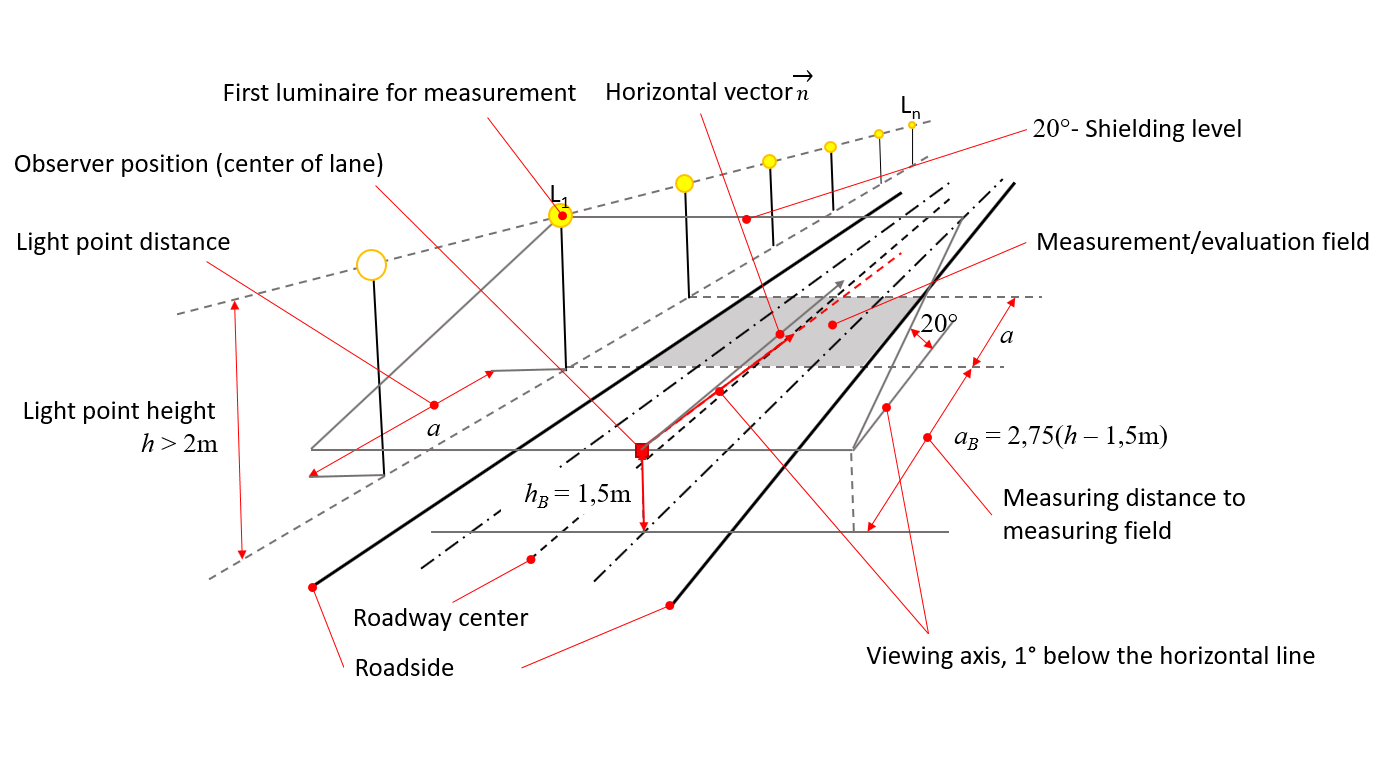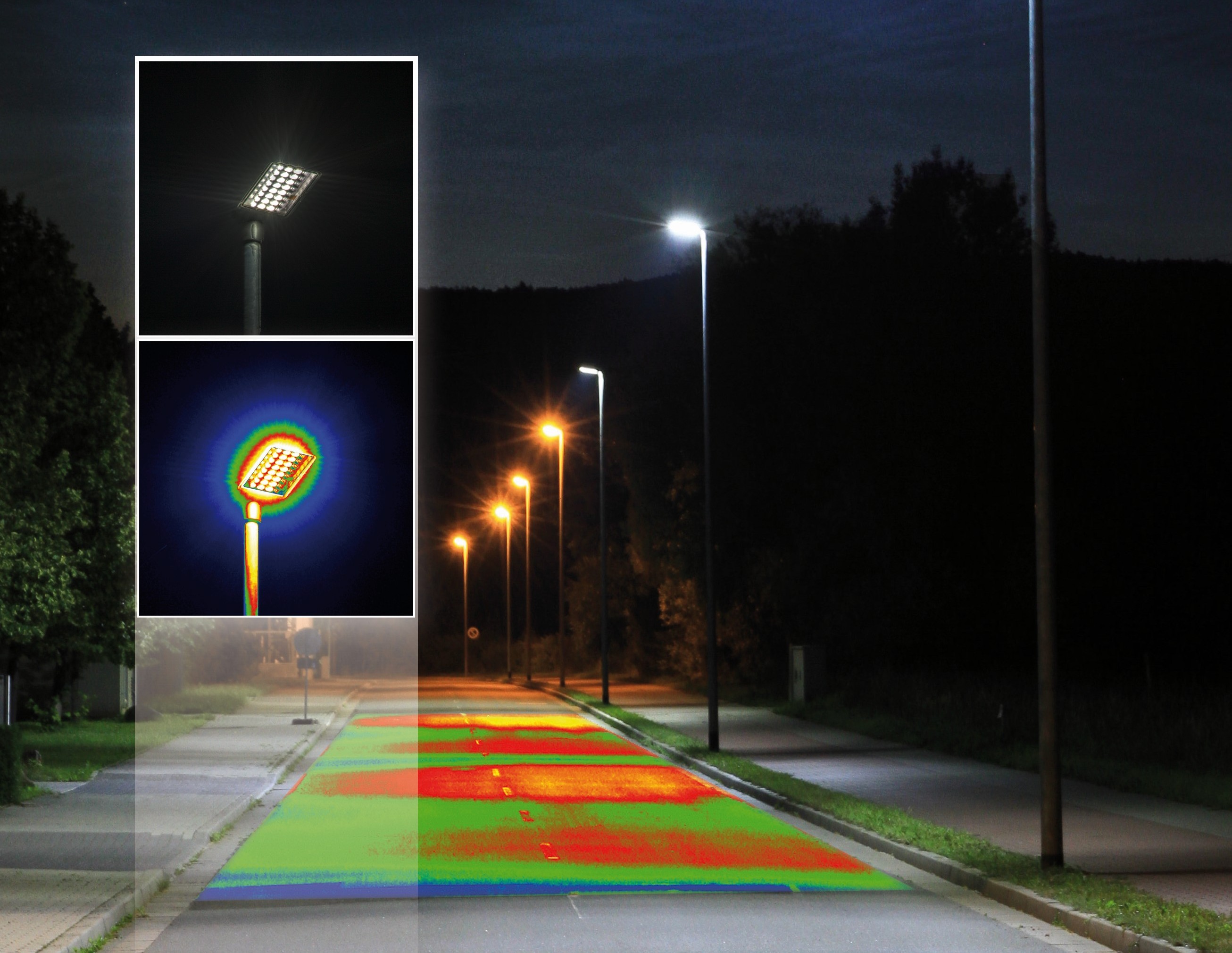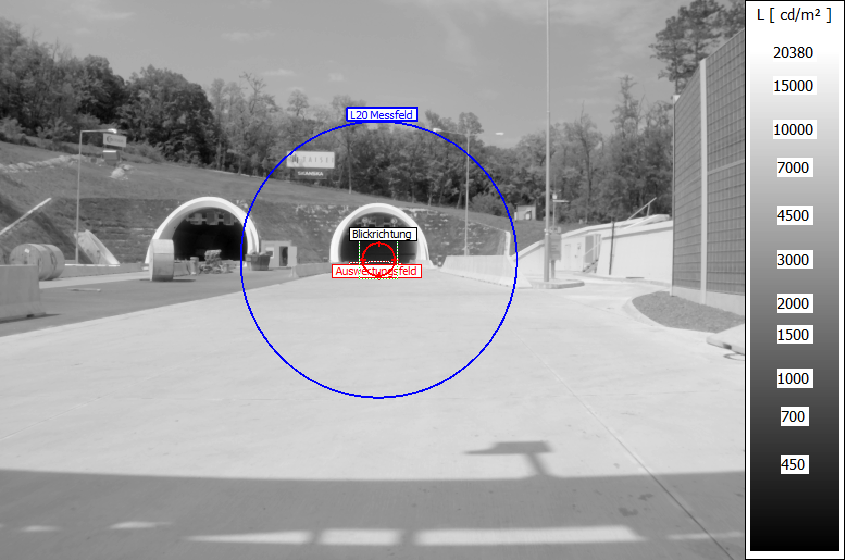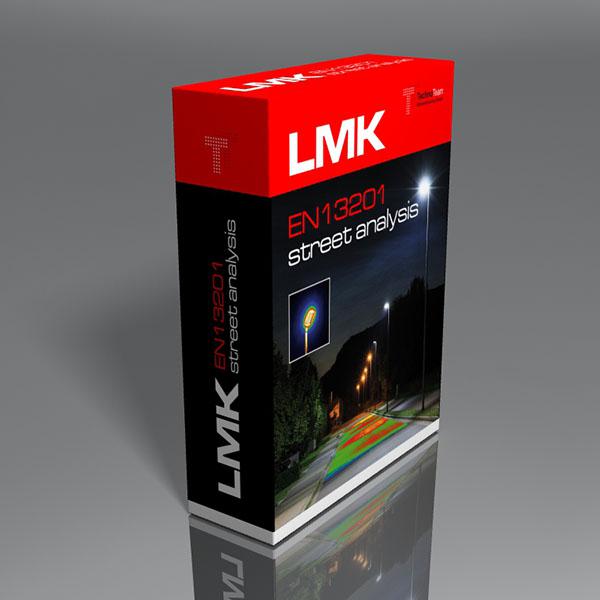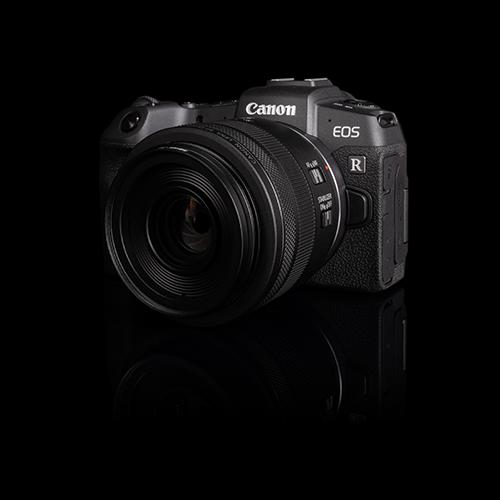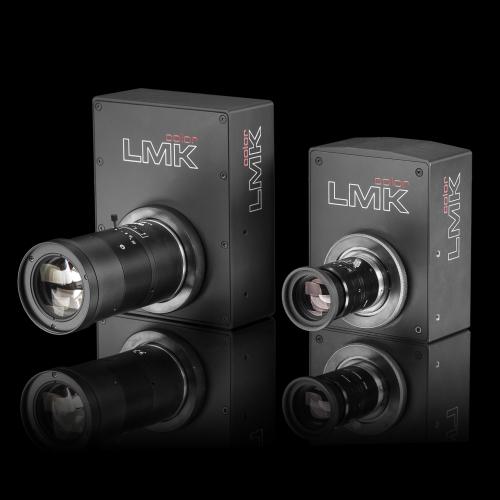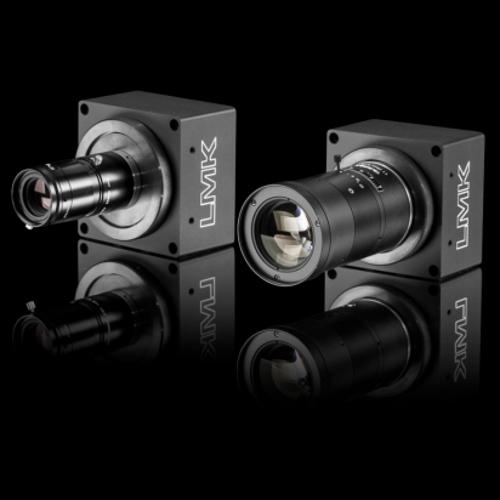The lighting of roadways and tunnels is subject to relevant regulations to ensure road traffic safety.
In the EU, for example, roadway lighting is regulated in EN 13201. The measurement parameters agreed upon in this standard are, in addition to the luminous intensity distribution of the luminaire itself, the illuminance achieved on the road, the distribution of the luminance and its uniformity from the driver's point of view, and the limitation of the glare effect of the luminaires on all road users.
Consequently, the photometric measurement variables are the horizontal illuminance and the average luminance on the road, the perceived luminance of the luminaires, and the position of the luminaires in the field of view.
Roadway luminance and uniformity
One of the measurement methods described in the standard is the use of a luminance measurement camera as the current state of the art, taking into account process-dependent requirements.
Here, a luminance camera is used to record a high-resolution measurement image of the road surface under the required observation conditions to derive the necessary key figures: luminance and uniformity.
Glare of fixed roadway lighting
Physiological glare assessment of roadway or tunnel lighting using the f(TI) method can and will also be performed with this additional software.
The geometric image information required is provided by an additional calibration of the LMK used. This makes it possible to measure the glare angle and the visible area of the luminaire.
For more information about glare measurement, please click here.
Illumination of road tunnels and underpasses
This measurement task is to evaluate the illumination of the entrance area of road tunnels and underpasses using the L20 measurement method (according to CIE Publ. 88-2004). The measurement data required for this are the average luminances of the roadway and the area surrounding the entrance portal in a 20° environment.
These measurement data are used to determine a minimum threshold luminance that must be achieved with the lighting system on the roadway. Implementation of the measuring technique is carried out exactly as the measurement of roadway luminance in accordance with EN 13201.
Our solution
TechnoTeam has several LMK products that meet these requirements. These are the LMK 6 models and the LMK mobile.
In addition, TechnoTeam provides a software add-on that implements the standard-compliant evaluation of roadway luminance according to EN 13201 in a partially-automated manner. An evaluation according to further international and national guidelines is also possible.
Furthermore, the add-on also provides the necessary data for tunnel sections for evaluation in compliance with relevant standards.
RELEVANT PRODUCTS
RELEVANT PUBLICATIONS
Medição de luminância por meio de imagens para avaliação do ofuscamento
Eletricidade Moderna, Brasilien, März 2015, S. 114–121
A medição do incremento limiar, ou seja, da perda de visibilidade causda pelo ofuscamento, será uma exigência das normas futuras. Atualmente, o ofuscamento causado por instalaçoes de iluminação artificial ou plea luz natural já tem sido avaliado tanto em aplicaçoes internas quanto externas. Exte artigo descreve uma ferramente de software que utiliza dispositivos de medição de luminância por meio de iamgens para medir o incremento limiar.
Authors: T. Porsch; A. Walkling; A. Überschär; C. Schierz; F. Schmidt
TI-Messung Mittels Leuchtdichtemesskamera (ILMD) in der Straßenbeleuchtung
Licht 2014 “Licht leicht gemacht, Licht leicht gebracht!“ | Sept. 21 - 24, 2014
Bildgebende Leuchtdichtemesskameras (ILMD, Imaging luminance measuring device) werden in vielen verschiedenen Anwendungen genutzt. Der erste Schritt in der Nutzung eines ILMDs ist die Auswertung der Leuchtdichten „wie gesehen“ im Messbild (ILMD Typ I). Im darauffolgenden Schritt werden nicht nur die Leuchtdichteinformation und ihre Wechselwirkungen, sondern zusätzlich die Informationen bezüglich Positionen und Größe im Messfeld ausgewertet (ILMD Typ II). Aufbauend auf diesen bereitgestellten Informationen kann nun auch die physiologische Blendung von Straßenbeleuchtungsanlagen anhand ortsaufgelöster Leuchtdichtebilder nachgemessen und überprüft werden. Dieser Beitrag stellt hierzu ein neu entwickeltes Softwaretool vor, mit dem eine derartige Auswertung erstmalig intuitiv und in wenigen Schritten erfolgen kann.
Authors: T. Porsch; A. Walkling; A. Überschär; C. Schierz; F. Schmidt
Measurement of the threshold increment (TI) in road lighting based on using ILMD
PROCEEDINGS of CIE 2014 „Lighting Quality and Energy Efficiency” | pp. 237 - 243
Imaging luminance measuring devices (ILMD) are widely used in different fields of lighting application. The assessment of glare caused by daylight or artificial lighting installations in outdoor and indoor applications has meanwhile become reality. Furthermore, the measurement of the threshold increment will become a requirement of future standards. The aim of this study was to develop a simple and an easy-to-use software tool to fulfil lighting requirements by using the ILMD. This study also includes a comparison of existing calculation methods for the threshold increment regarding their technical requirements to be met by the ILMD and also the validation of new ideas and methods for analysis and evaluation.
Authors: T. Porsch; A. Walkling; A. Überschär; C. Schierz; F. Schmidt
Quantitative Blendungsbewertung: Blendungskennzahlen mit bildauflösender Leuchtdichtemesstechnik
Licht Vol. 64, No. 7/8 (2012)
Die Blendung ist ein wichtiges Gütemerkmal in der Außenbeleuchtung, die deshalb zu bewerten und zu minimieren ist. Zur Bewertung stehen verschiedene Kennzahlen zur Verfügung, die nur aufwändig mit konventioneller Messtechnik in der Praxis erfasst werden können. Mit bildauflösender Leuchtdichtemesstechnik kann hingegen dieser Messprozess vereinfacht werden. Der Artikel zeigt am Beispiel der Lichtimmission, wie dadurch beispielsweise das Blendmaß ks einfach und ausreichend genau bestimmt werden kann. Weitere Kennzahlen könnten bildaufgelöst gemessen werden, womit aber eine entsprechende Überarbeitung der Normen einhergehen müsste.
Authors: U. Krüger ; T. Porsch ; F. Schmidt ; A. Walkling
Dynamische ortsaufgelöste Leuchtdichtemessungen auf Straßen und in Tunneln
Tagung LICHT 2004,19.-22.09.2004, Dortmund
Die Beurteilung von Leuchtdichten und Beleuchtungsstärken in Tunneln und auf Straßen ist zur kontinuierlichen Gewährleistung der Verkehrssicherheit sehr wichtig. Mit Hilfe der ortsaufgelösten Leuchtdichtemesstechnik können gleichzeitig große Straßen- oder Tunnelbereiche erfasst werden. Mit der inzwischen von TechnoTeam zur Verfügung stehenden Leuchtdichtemesstechnik kann dies auch aus einem fahrenden Fahrzeug heraus erfolgen. Sperrzeiten des Tunnels oder der Straße können entfallen. Die erfassten Leuchtdichtebilder können im Büro ausgewertet werden, wobei verschiedene Aspekte berücksichtigt werden können und die Dokumentation der Messpunkte durch die Darstellung im Bild immer gewährleistet ist.
Authors: F. Schmidt

